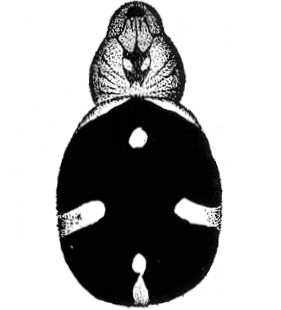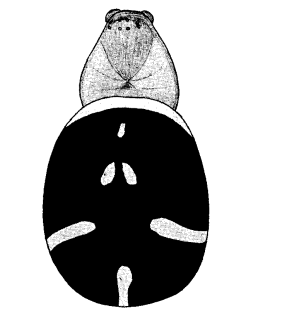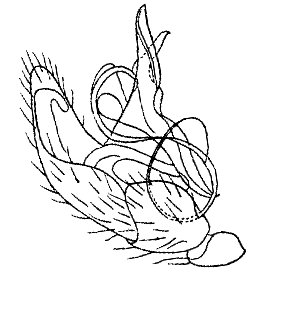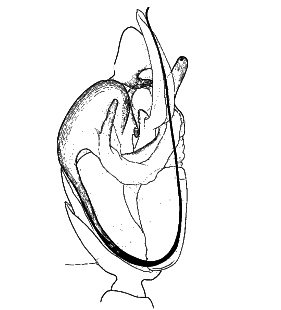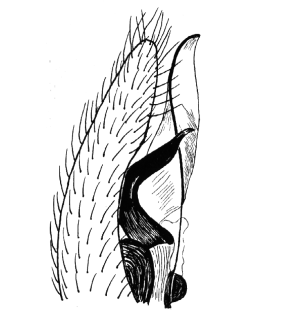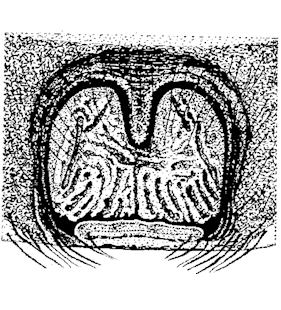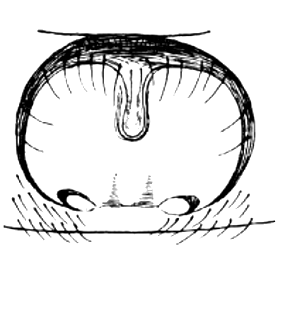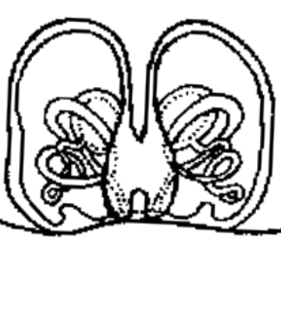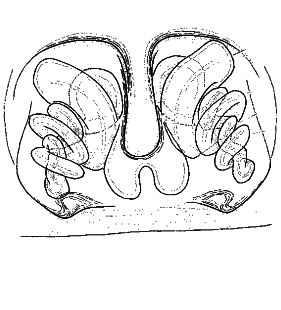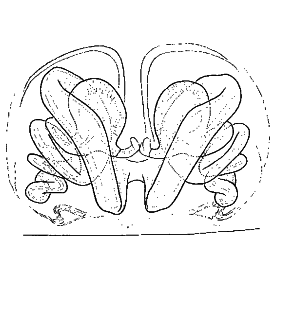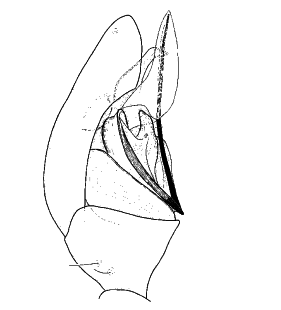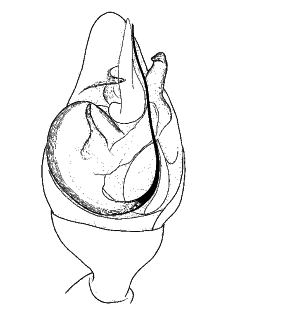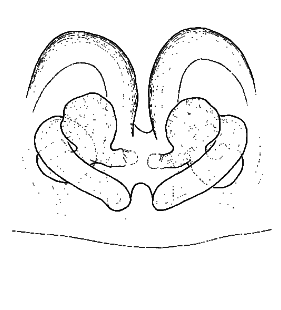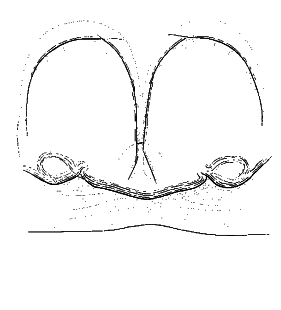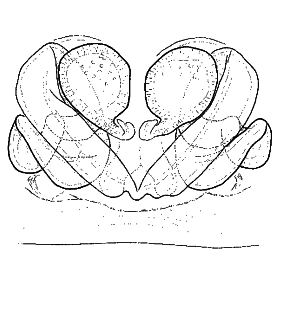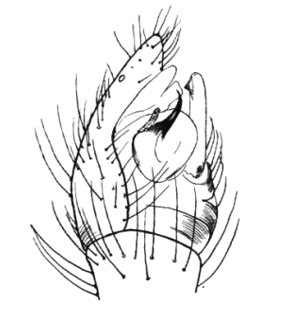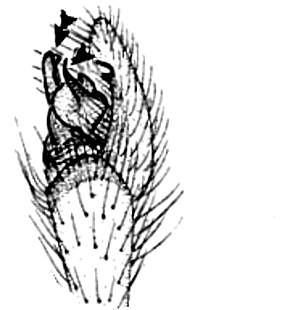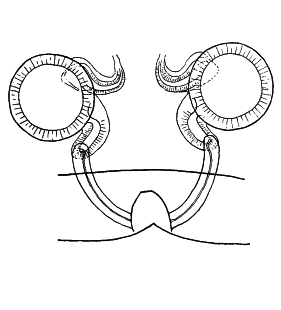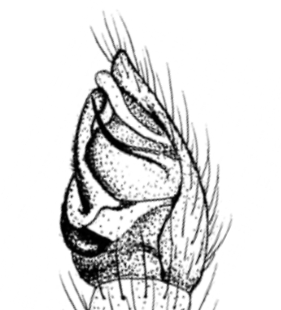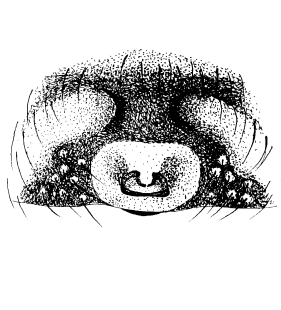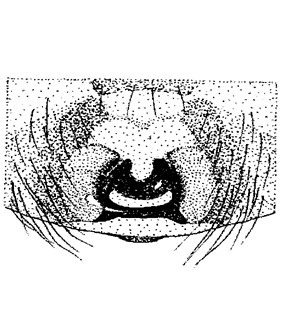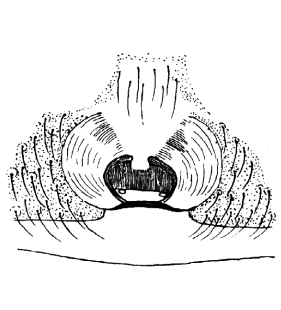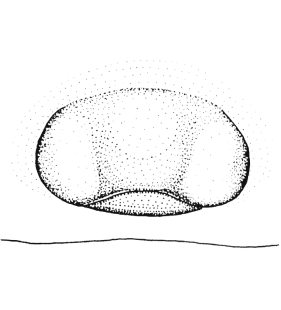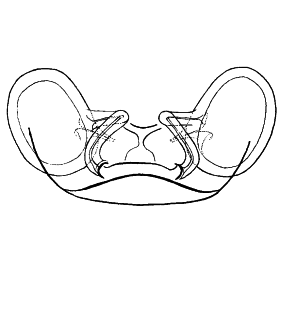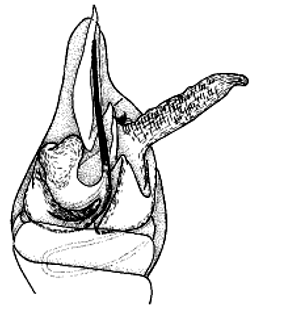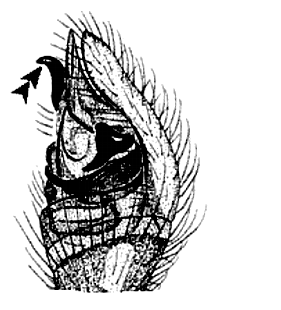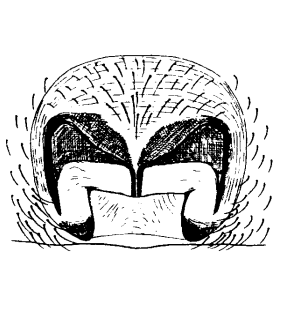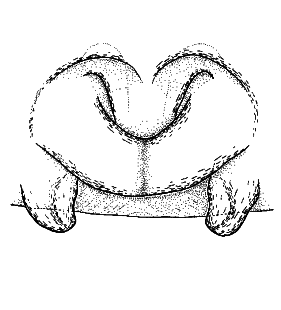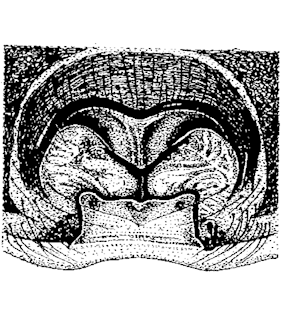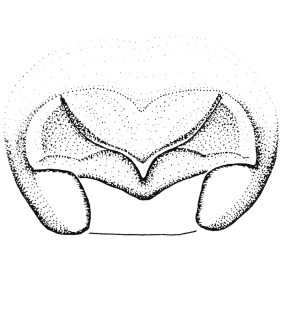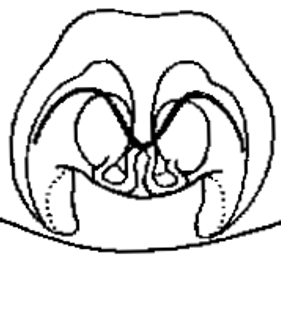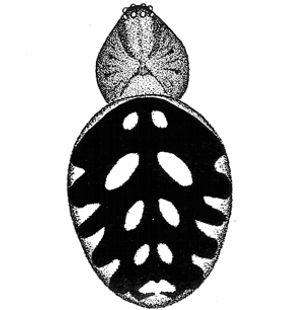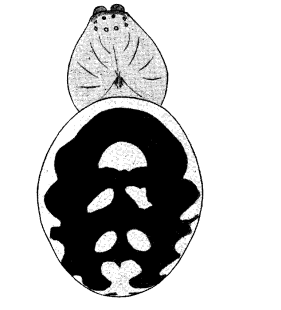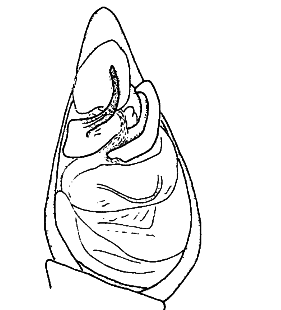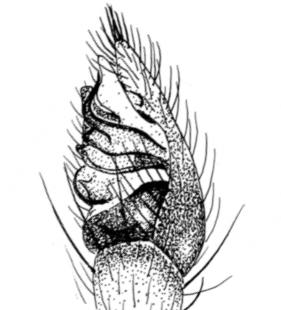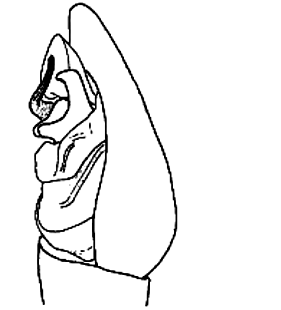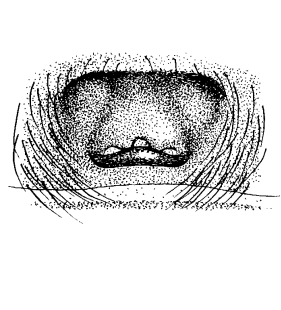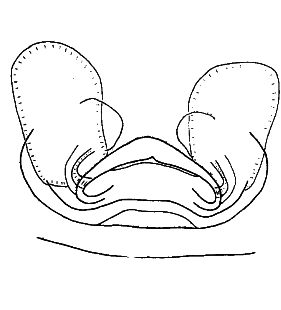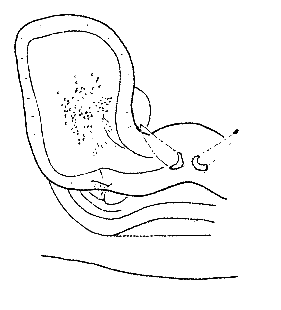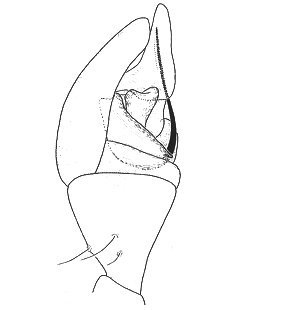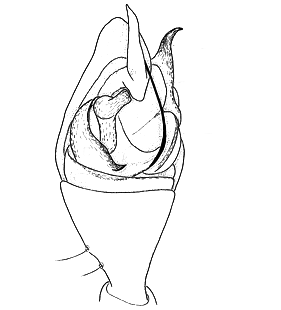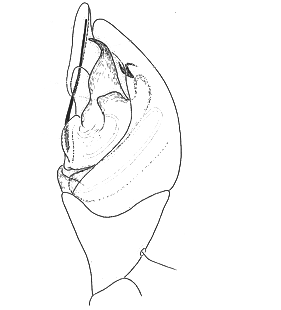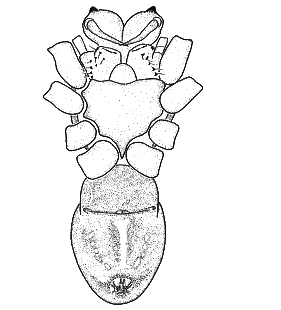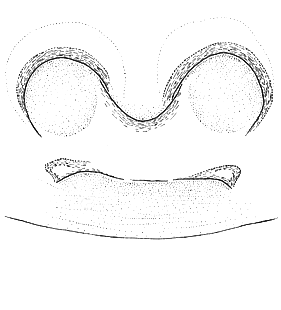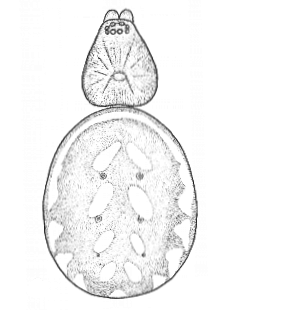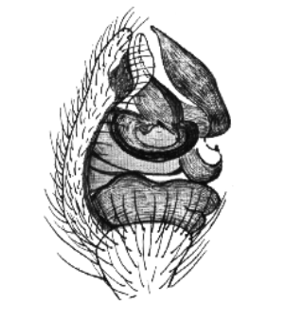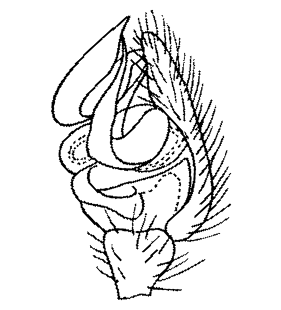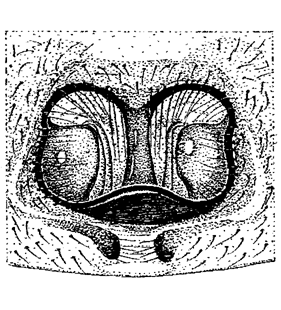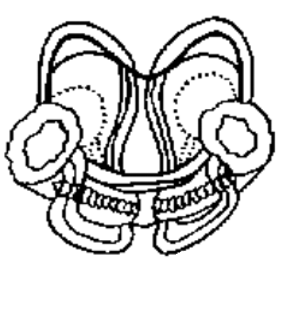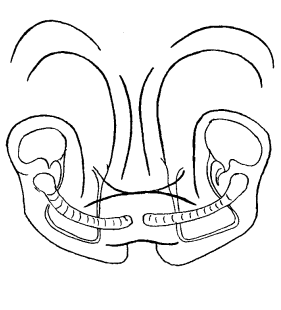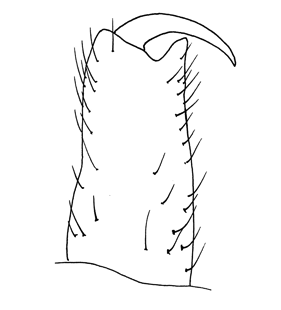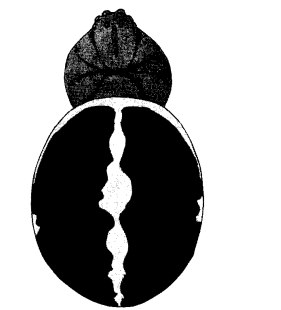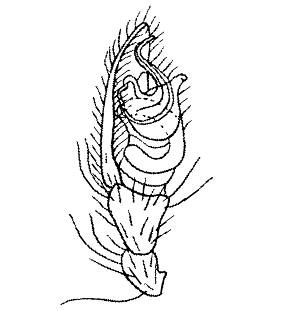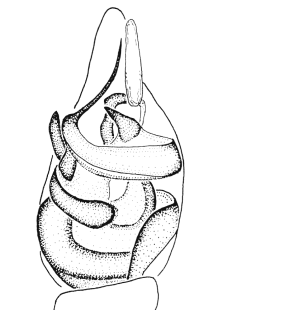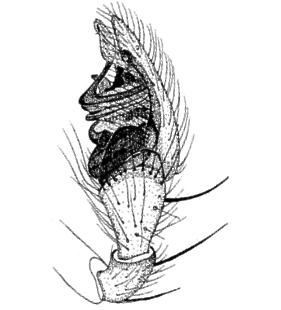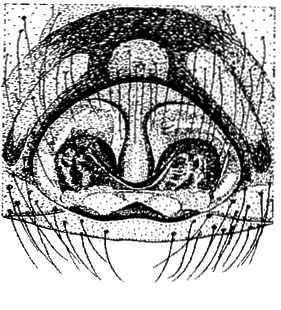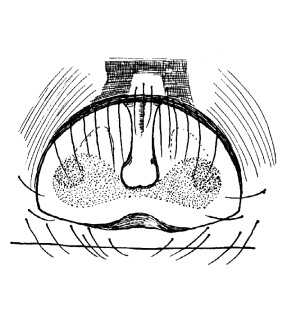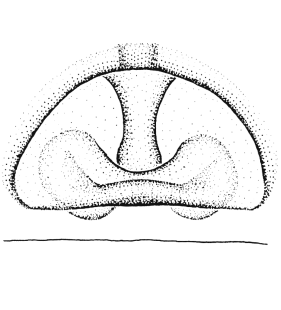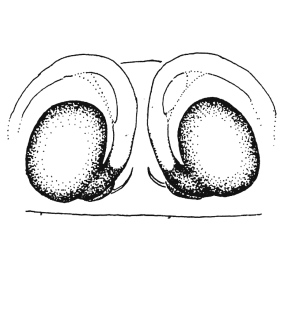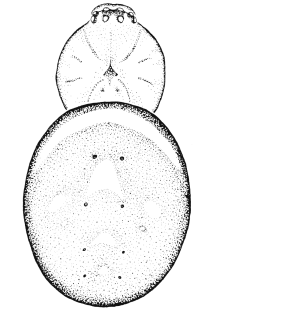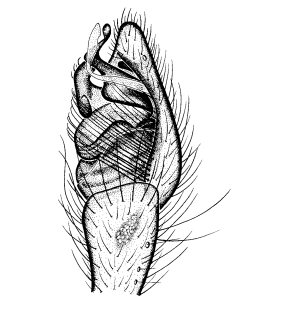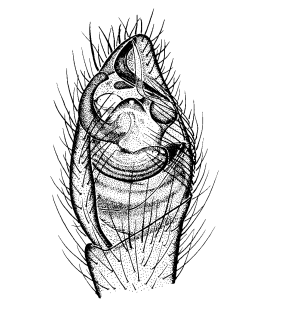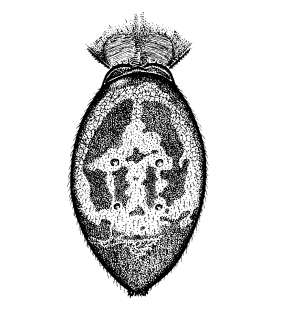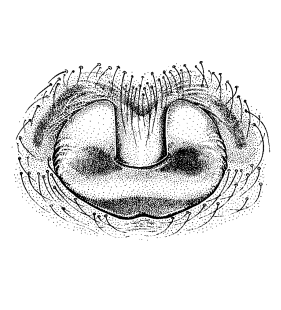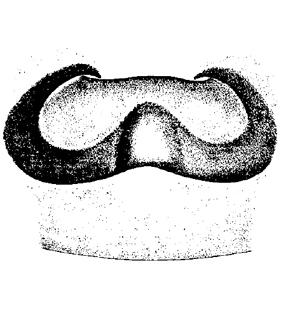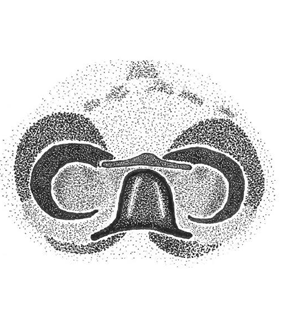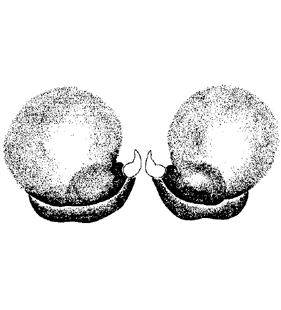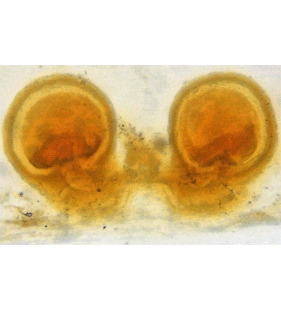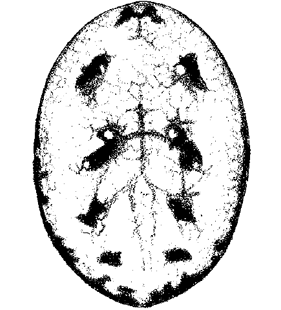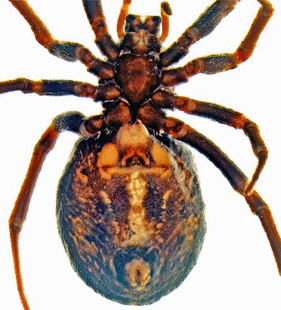


| 1. Steatoda concolor (Caporiacco, 1933) |
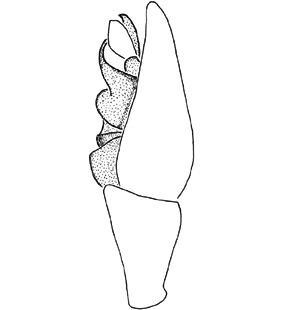  Pedipalp, retrolateral view Pedipalp, retrolateral view
(Van Keer & Bosmans 2010)
|
  Pedipalp, ventral view Pedipalp, ventral view
(Van Keer & Bosmans 2010)
|
  Pedipalp, prolateral view Pedipalp, prolateral view
(Van Keer et al. 2024)
|
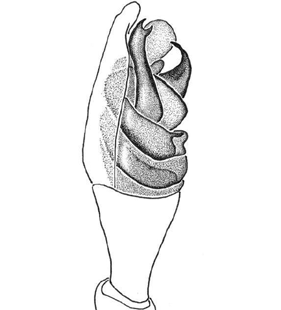  Pedipalp, prolateral view Pedipalp, prolateral view
(Van Keer et al. 2024)
|
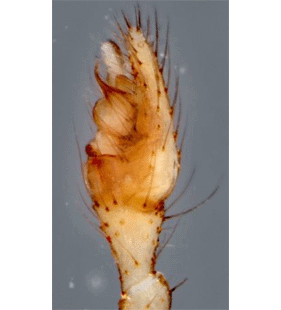  Pedipalp, retrolateral view Pedipalp, retrolateral view
(Van Keer et al. 2024)
|
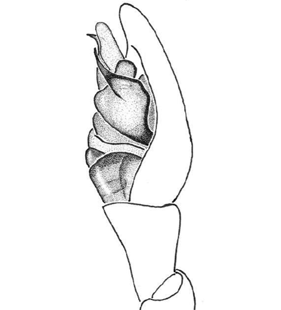  Pedipalp, retrolateral view Pedipalp, retrolateral view
(Van Keer et al. 2024)
|
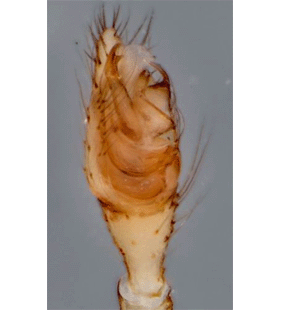  Pedipalp, ventral view Pedipalp, ventral view
(Van Keer et al. 2024)
|
  Tegular apophysis Tegular apophysis
(Van Keer et al. 2024)
|
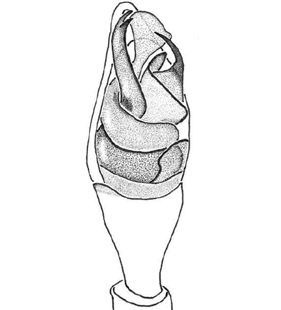  Pedicel, ventral view Pedicel, ventral view
(Van Keer et al. 2024)
|
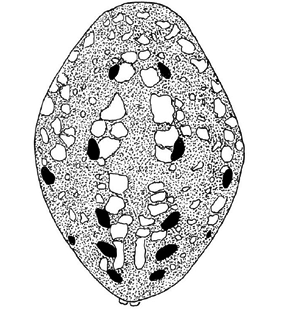  Opisthosoma, dorsal view Opisthosoma, dorsal view
(Van Keer & Bosmans 2010)
|
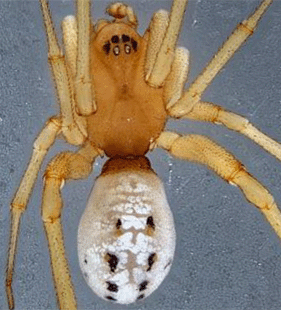  Habitus, dorsal view Habitus, dorsal view
(Van Keer et al. 2024)
|
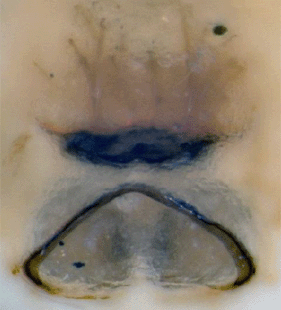  Epigyne Epigyne
(Van Keer et al. 2024)
|
  Epigyne Epigyne
(Van Keer et al. 2024)
|
  Vulva, dorsal view Vulva, dorsal view
(Van Keer et al. 2024)
|
  Vulva, dorsal view Vulva, dorsal view
(Van Keer et al. 2024)
|
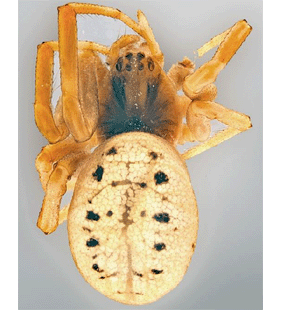  Habitus, dorsal view Habitus, dorsal view
(Van Keer et al. 2024)
|
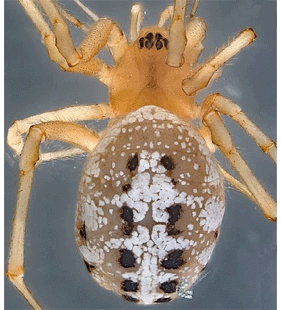  Habitus, dorsal view Habitus, dorsal view
(Van Keer et al. 2024)
|
  Habitus, ventral view Habitus, ventral view
(Van Keer et al. 2024)
|
| |
|
|
|



| 2. Steatoda dahli (Nosek, 1905) |
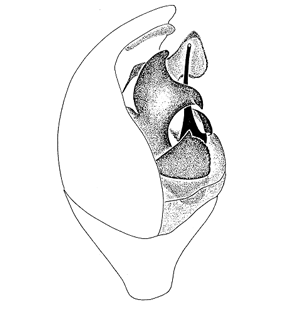  Pedipalp, prolateral view Pedipalp, prolateral view
(Levy 1998b)
|
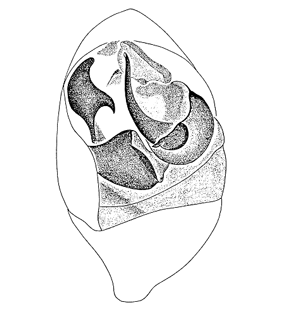  Pedipalp, ventral view Pedipalp, ventral view
(Levy 1998b)
|
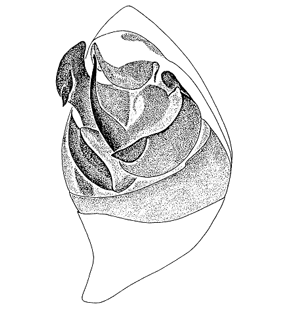  Pedipalp, retrolateral view Pedipalp, retrolateral view
(Levy 1998b)
|
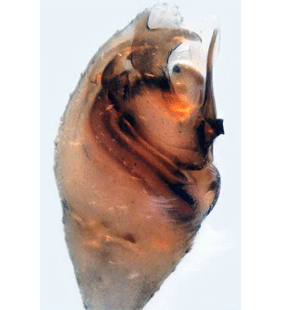  Pedipalp, prolateral view Pedipalp, prolateral view
(Van Keer et al. 2024)
|
  Pedipalp, prolateral view Pedipalp, prolateral view
(Van Keer et al. 2024)
|
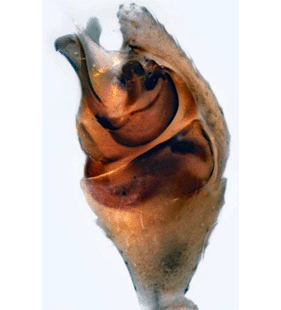  Pedipalp, retrolateral view Pedipalp, retrolateral view
(Van Keer et al. 2024)
|
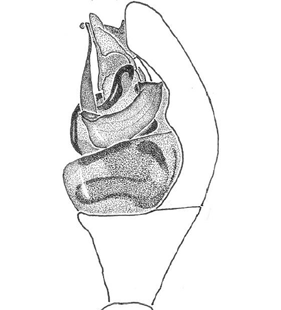  Pedipalp, retrolateral view Pedipalp, retrolateral view
(Van Keer et al. 2024)
|
  Pedipalp, ventral view Pedipalp, ventral view
(Van Keer et al. 2024)
|
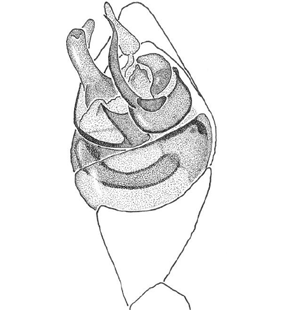  Pedipalp, ventral view Pedipalp, ventral view
(Van Keer et al. 2024)
|
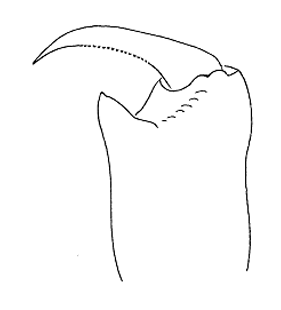  Chelicera Chelicera
(Levy 1998b)
|
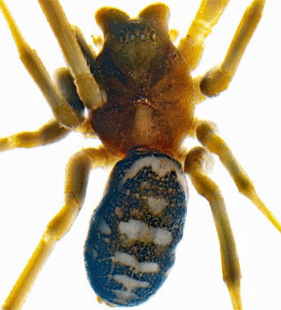  Habitus, dorsal view Habitus, dorsal view
(Van Keer et al. 2024)
|
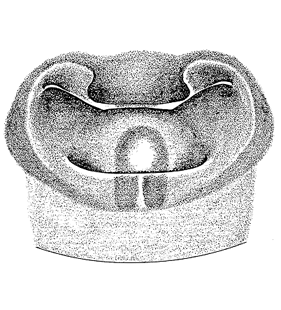  Epigyne, ventral view Epigyne, ventral view
(Levy 1998b)
|
  Epigyne Epigyne
(Zamani et al. 2024a)
|
  Epigyne Epigyne
(Van Keer et al. 2024)
|
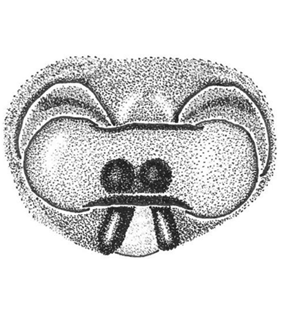  Epigyne Epigyne
(Van Keer et al. 2024)
|
  Vulva, dorsal view Vulva, dorsal view
(Levy 1998b)
|
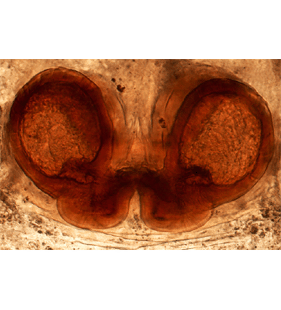  Vulva, dorsal view Vulva, dorsal view
(Zamani et al. 2024a)
|
  Vulva, dorsal view Vulva, dorsal view
(Van Keer et al. 2024)
|
  Vulva, dorsal view Vulva, dorsal view
(Van Keer et al. 2024)
|
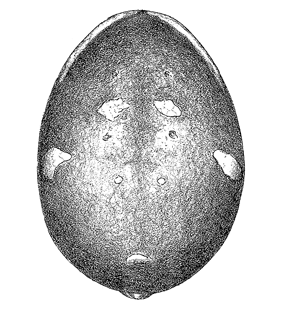  Opisthosoma, dorsal view Opisthosoma, dorsal view
(Levy 1998b)
|
  Opisthosoma, dorsal view Opisthosoma, dorsal view
(Levy 1998b)
|
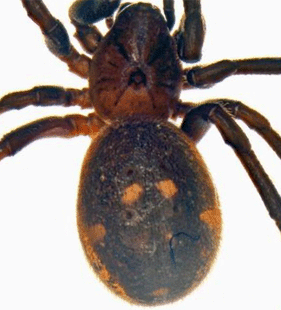  Habitus, dorsal view Habitus, dorsal view
(Van Keer et al. 2024)
|
  Habitus, ventral view Habitus, ventral view
(Van Keer et al. 2024)
|
|
|



| 3. Steatoda dickjonesi Bosselaers & Van Keer, 2024 |
  Pedipalp, prolateral view Pedipalp, prolateral view
(Van Keer et al. 2024)
|
  Pedipalp, prolateral view Pedipalp, prolateral view
(Van Keer et al. 2024)
|
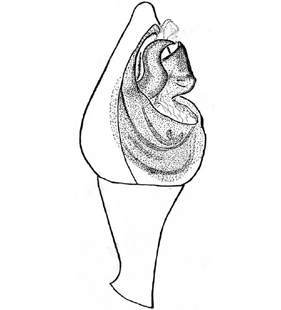  Pedipalp, prolateral view Pedipalp, prolateral view
(Van Keer et al. 2024)
|
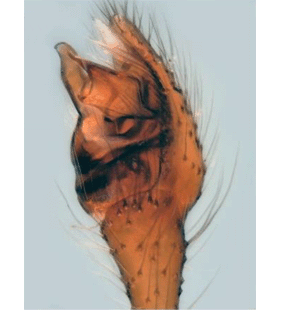  Pedipalp, retrolateral view Pedipalp, retrolateral view
(Van Keer et al. 2024)
|
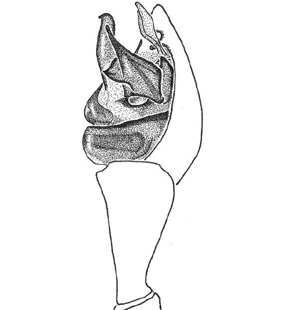  Pedipalp, retrolateral view Pedipalp, retrolateral view
(Van Keer et al. 2024)
|
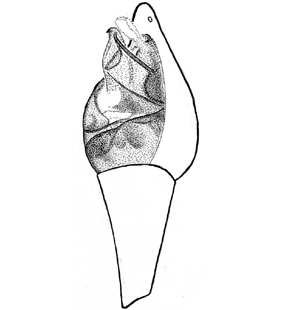  Pedipalp, retrolateral view Pedipalp, retrolateral view
(Van Keer et al. 2024)
|
  Pedipalp, retrolateral view Pedipalp, retrolateral view
(Van Keer et al. 2024)
|
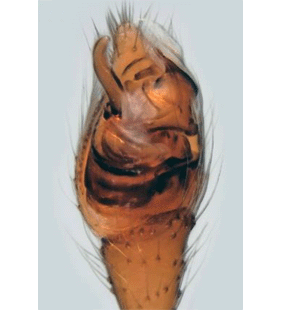  Pedipalp, ventral view Pedipalp, ventral view
(Van Keer et al. 2024)
|
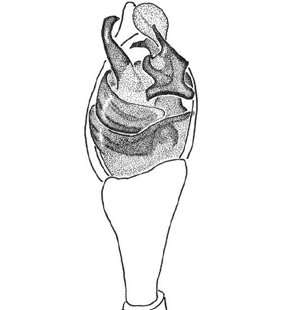  Pedipalp, ventral view Pedipalp, ventral view
(Van Keer et al. 2024)
|
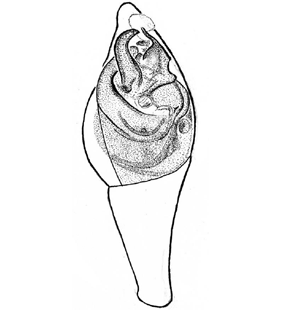  Pedipalp, ventral view Pedipalp, ventral view
(Van Keer et al. 2024)
|
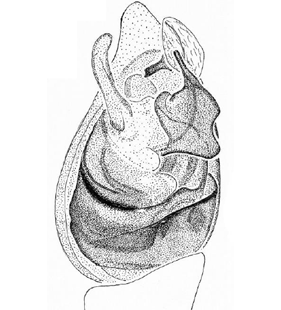  Pedipalp, ventral view Pedipalp, ventral view
(Van Keer et al. 2024)
|
  Pedipalp, retrolateral view Pedipalp, retrolateral view
(Méndez 2024)
|
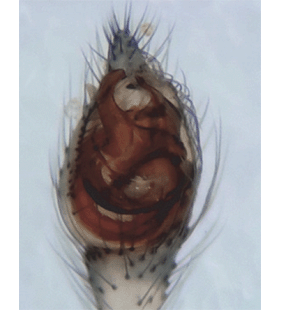  Pedipalp, ventral view Pedipalp, ventral view
(Méndez 2024)
|
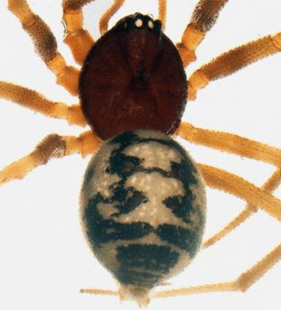  Habitus, dorsal view Habitus, dorsal view
(Van Keer et al. 2024)
|
  Epigyne Epigyne
(Van Keer et al. 2024)
|
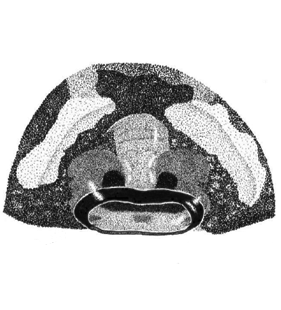  Epigyne Epigyne
(Van Keer et al. 2024)
|
  Epigyne Epigyne
(Van Keer et al. 2024)
|
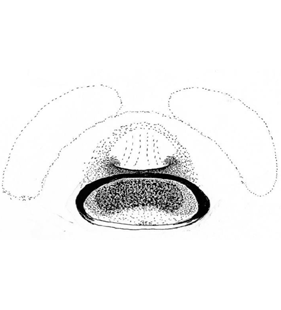  Epigyne Epigyne
(Van Keer et al. 2024)
|
  Vulva, dorsal view Vulva, dorsal view
(Van Keer et al. 2024)
|
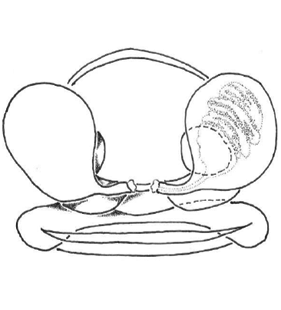  Vulva, dorsal view Vulva, dorsal view
(Van Keer et al. 2024)
|
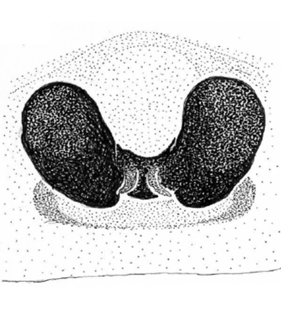  Vulva, dorsal view Vulva, dorsal view
(Van Keer et al. 2024)
|
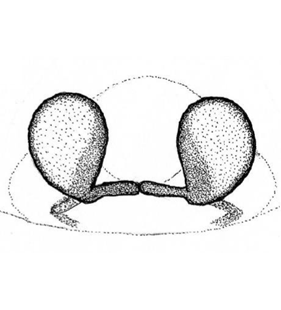  Vulva, dorsal view Vulva, dorsal view
(Van Keer et al. 2024)
|
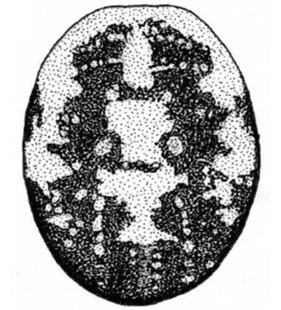  Opisthosoma, dorsal view Opisthosoma, dorsal view
(Van Keer et al. 2024)
|
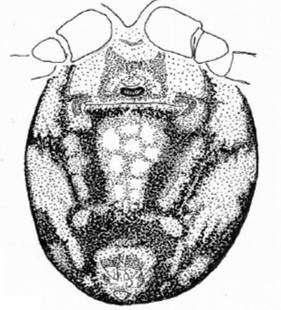  Opisthosoma, ventral view Opisthosoma, ventral view
(Van Keer et al. 2024)
|
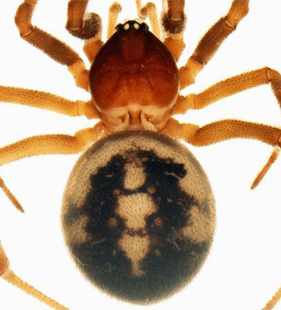  Habitus, dorsal view Habitus, dorsal view
(Van Keer et al. 2024)
|
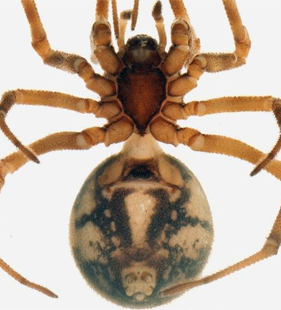  Habitus, ventral view Habitus, ventral view
(Van Keer et al. 2024)
|
|
|



| 4. Steatoda ephippiata (Thorell, 1875) |
|



| 5. Steatoda erigoniformis (O. Pickard-Cambridge, 1872) |
  Pedipalp, prolateral view Pedipalp, prolateral view
(Levy & Amitai 1982b)
|
  Pedipalp, ventral view Pedipalp, ventral view
(Levy & Amitai 1982b)
|
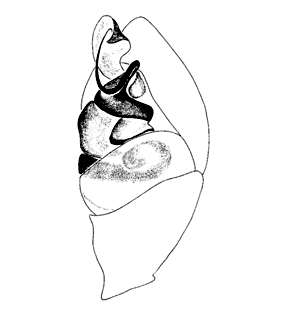  Pedipalp, retrolateral view Pedipalp, retrolateral view
(Levy & Amitai 1982b)
|
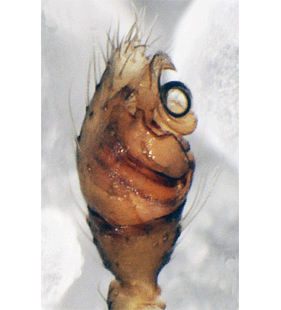  Pedipalp, prolateral view Pedipalp, prolateral view
(Danışman & Coşar 2022b)
|
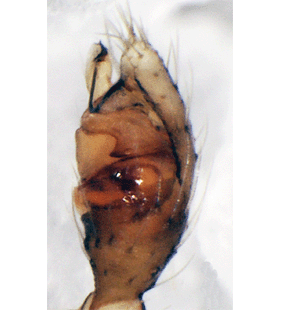  Pedipalp, retrolateral view Pedipalp, retrolateral view
(Danışman & Coşar 2022b)
|
  Pedipalp, ventral view Pedipalp, ventral view
(Danışman & Coşar 2022b)
|
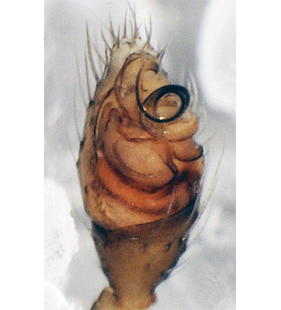  Pedipalp, ventro-prolateral view Pedipalp, ventro-prolateral view
(Danışman & Coşar 2022b)
|
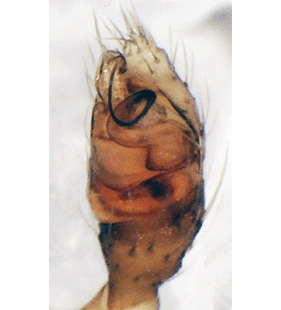  Pedipalp, ventro-retrolateral view Pedipalp, ventro-retrolateral view
(Danışman & Coşar 2022b)
|
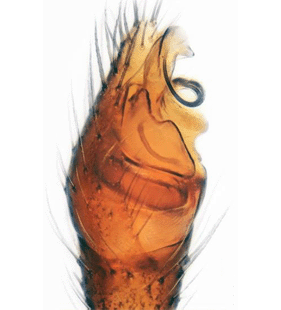  Pedipalp, prolateral view Pedipalp, prolateral view
(Van Keer et al. 2024)
|
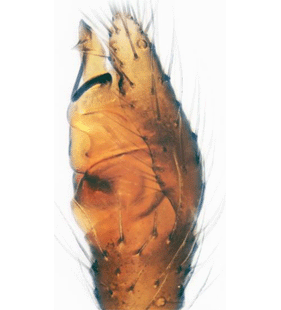  Pedipalp, retrolateral view Pedipalp, retrolateral view
(Van Keer et al. 2024)
|
  Pedipalp, ventral view Pedipalp, ventral view
(Van Keer et al. 2024)
|
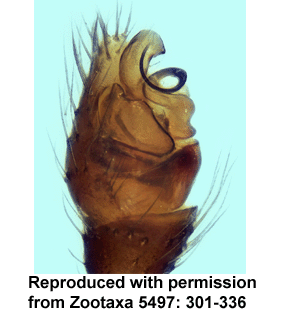  Pedipalp, prolateral view Pedipalp, prolateral view
(Alioua & Bosmans 2024)
|
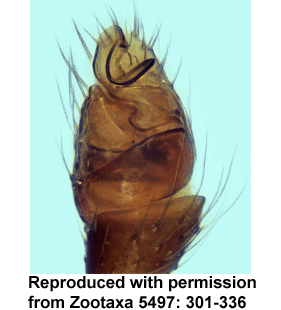  Pedipalp, ventral view Pedipalp, ventral view
(Alioua & Bosmans 2024)
|
  Sternum Sternum
(Levy & Amitai 1982b)
|
  Chelicera Chelicera
(Levy & Amitai 1982b)
|
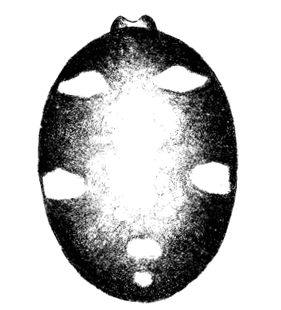  Opisthosoma, dorsal view Opisthosoma, dorsal view
(Levy & Amitai 1982b)
|
  Habitus, dorsal view Habitus, dorsal view
(Van Keer et al. 2024)
|
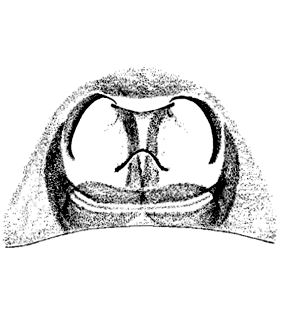  Epigyne Epigyne
(Levy & Amitai 1982b)
|
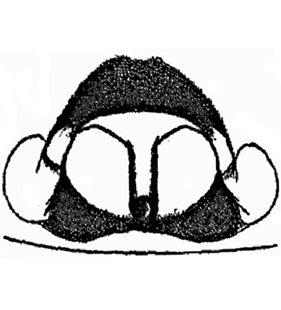  Epigyne Epigyne
(Denis 1952f)
|
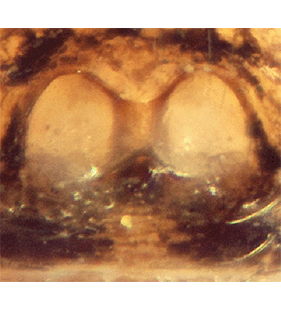  Epigyne Epigyne
(Bosmans & Hervé 2021)
|
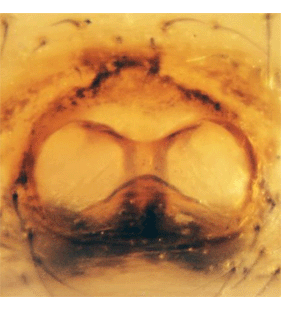  Epigyne Epigyne
(Van Keer et al. 2024)
|
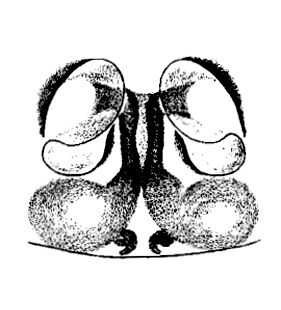  Vulva, dorsal view Vulva, dorsal view
(Levy & Amitai 1982b)
|
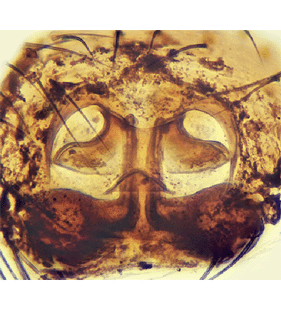  Vulva, dorsal view Vulva, dorsal view
(Bosmans & Hervé 2021)
|
  Vulva, dorsal view Vulva, dorsal view
(Van Keer et al. 2024)
|
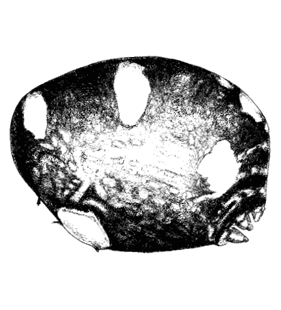  Opisthosoma, lateral view Opisthosoma, lateral view
(Levy & Amitai 1982b)
|
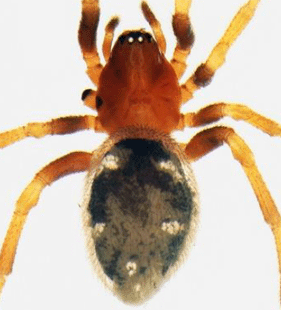  Habitus, dorsal view Habitus, dorsal view
(Van Keer et al. 2024)
|
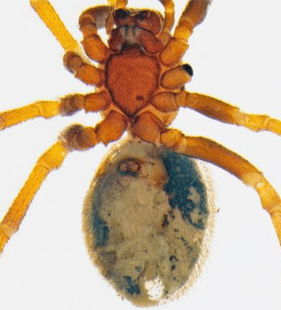  Habitus, ventral view Habitus, ventral view
(Van Keer et al. 2024)
|
| |
|
|
|



| 6. Steatoda ifricola Lecigne, Lips, Moutaouakil & Oger, 2020 |
  Pedipalp, prolateral view Pedipalp, prolateral view
(Lecigne et al. 2020)
|
  Pedipalp, prolateral view Pedipalp, prolateral view
(Lecigne et al. 2020)
|
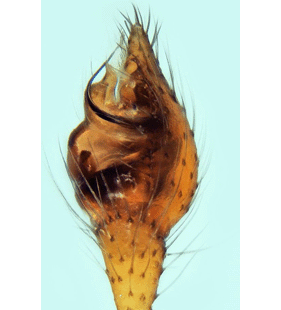  Pedipalp, retrolateral view Pedipalp, retrolateral view
(Lecigne et al. 2020)
|
  Pedipalp, retrolateral view Pedipalp, retrolateral view
(Lecigne et al. 2020)
|
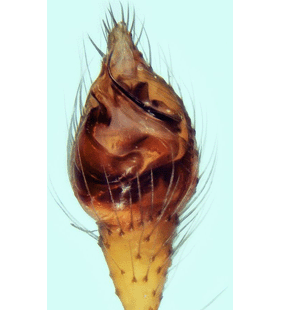  Pedipalp, ventral view Pedipalp, ventral view
(Lecigne et al. 2020)
|
  Pedipalp, ventral view Pedipalp, ventral view
(Lecigne et al. 2020)
|
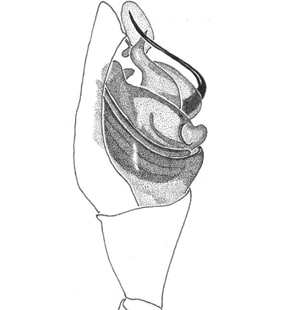  Pedipalp, prolateral view Pedipalp, prolateral view
(Van Keer et al. 2024)
|
  Pedipalp, retrolateral view Pedipalp, retrolateral view
(Van Keer et al. 2024)
|
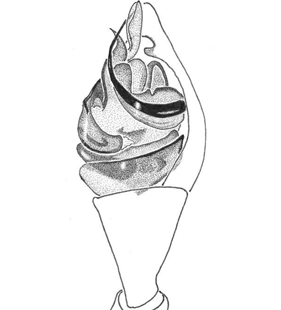  Pedicel, ventral view Pedicel, ventral view
(Van Keer et al. 2024)
|
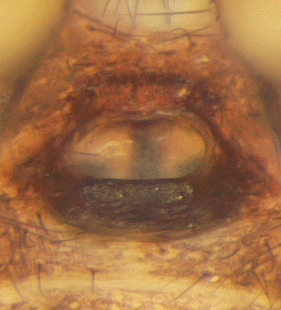  Epigyne Epigyne
(Lecigne et al. 2020)
|
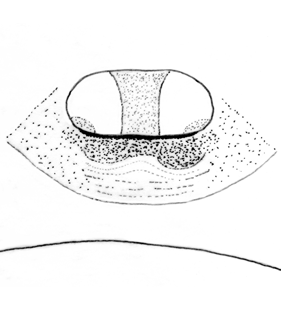  Epigyne Epigyne
(Lecigne et al. 2020)
|
  Epigyne Epigyne
(Lecigne et al. 2020)
|
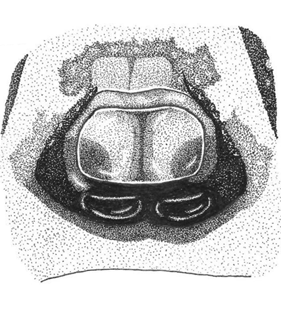  Epigyne Epigyne
(Van Keer et al. 2024)
|
  Vulva, dorsal view Vulva, dorsal view
(Lecigne et al. 2020)
|
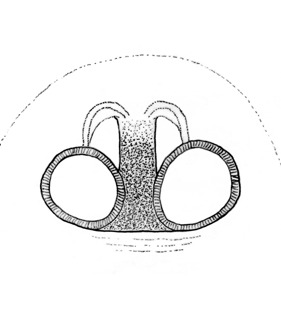  Vulva, dorsal view Vulva, dorsal view
(Lecigne et al. 2020)
|
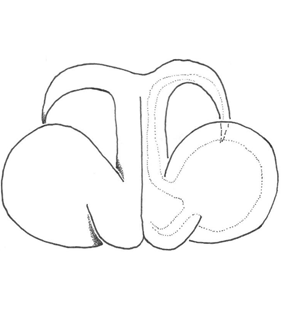  Vulva, dorsal view Vulva, dorsal view
(Van Keer et al. 2024)
|
|
|
|



| 7. Steatoda ingeae Van Keer, 2024 |
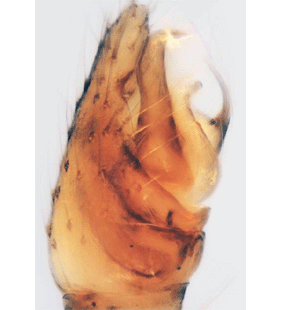  Pedipalp, prolateral view Pedipalp, prolateral view
(Van Keer et al. 2024)
|
  Pedipalp, prolateral view Pedipalp, prolateral view
(Van Keer et al. 2024)
|
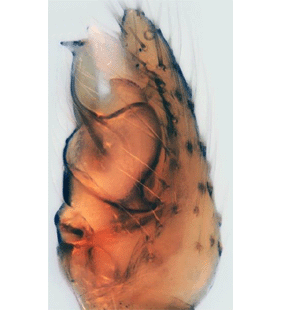  Pedipalp, retrolateral view Pedipalp, retrolateral view
(Van Keer et al. 2024)
|
  Pedipalp, retrolateral view Pedipalp, retrolateral view
(Van Keer et al. 2024)
|
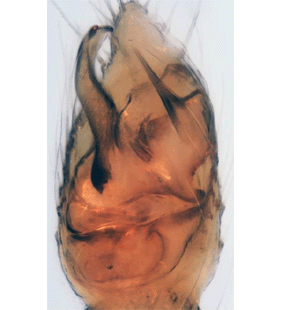  Pedipalp, ventral view Pedipalp, ventral view
(Van Keer et al. 2024)
|
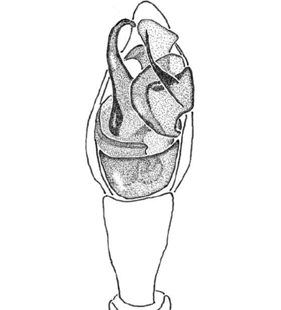  Pedipalp, ventral view Pedipalp, ventral view
(Van Keer et al. 2024)
|
  Habitus, dorsal view Habitus, dorsal view
(Van Keer et al. 2024)
|
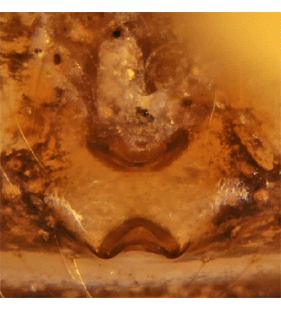  Epigyne Epigyne
(Van Keer et al. 2024)
|
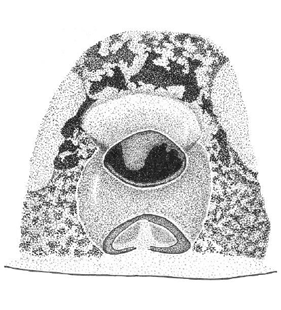  Epigyne Epigyne
(Van Keer et al. 2024)
|
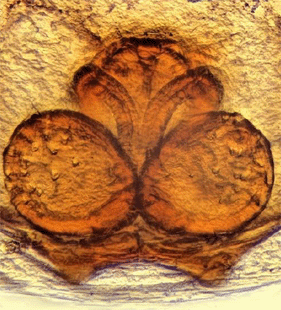  Vulva, dorsal view Vulva, dorsal view
(Van Keer et al. 2024)
|
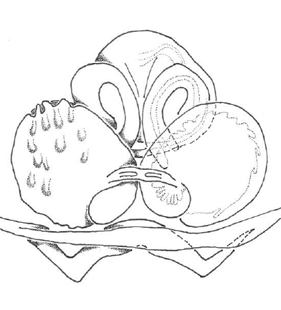  Vulva, dorsal view Vulva, dorsal view
(Van Keer et al. 2024)
|
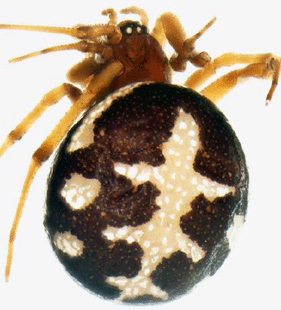  Habitus, dorsal view Habitus, dorsal view
(Van Keer et al. 2024)
|
  Habitus, ventral view Habitus, ventral view
(Van Keer et al. 2024)
|
|
|
|



| 8. Steatoda koeni Van Keer, 2024 |
  Pedipalp, prolateral view Pedipalp, prolateral view
(Van Keer et al. 2024)
|
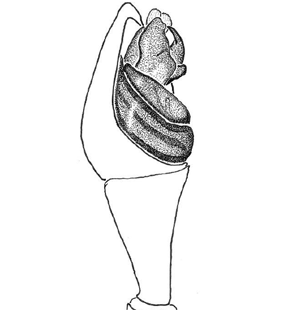  Pedipalp, prolateral view Pedipalp, prolateral view
(Van Keer et al. 2024)
|
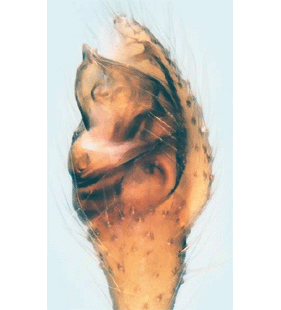  Pedipalp, retrolateral view Pedipalp, retrolateral view
(Van Keer et al. 2024)
|
  Pedipalp, retrolateral view Pedipalp, retrolateral view
(Van Keer et al. 2024)
|
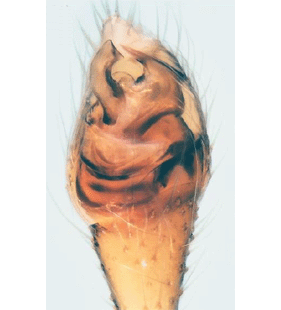  Pedipalp, ventral view Pedipalp, ventral view
(Van Keer et al. 2024)
|
  Pedipalp, ventral view Pedipalp, ventral view
(Van Keer et al. 2024)
|
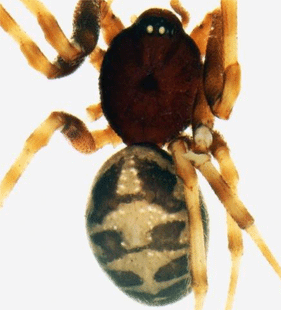  Habitus, dorsal view Habitus, dorsal view
(Van Keer et al. 2024)
|
  Epigyne Epigyne
(Van Keer et al. 2024)
|
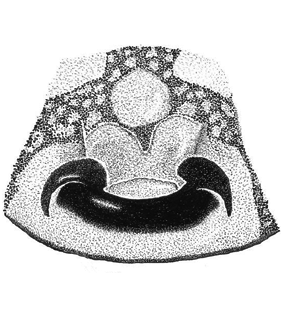  Epigyne Epigyne
(Van Keer et al. 2024)
|
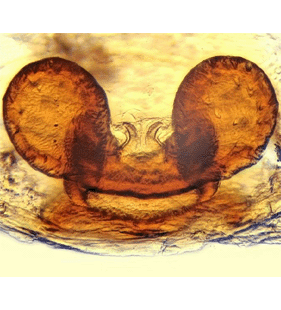  Vulva, dorsal view Vulva, dorsal view
(Van Keer et al. 2024)
|
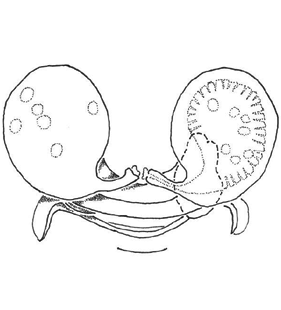  Vulva, dorsal view Vulva, dorsal view
(Van Keer et al. 2024)
|
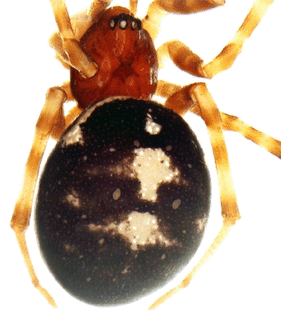  Habitus, dorsal view Habitus, dorsal view
(Van Keer et al. 2024)
|
  Habitus, ventral view Habitus, ventral view
(Van Keer et al. 2024)
|
|
|
|



| 9. Steatoda latifasciata (Simon, 1873) |
  Pedipalp, prolateral view Pedipalp, prolateral view
(Levy & Amitai 1982b)
|
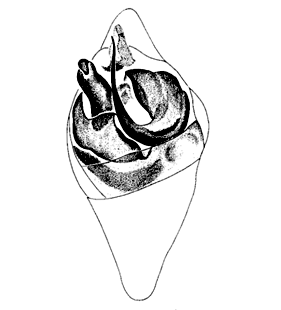  Pedipalp, ventral view Pedipalp, ventral view
(Levy & Amitai 1982b)
|
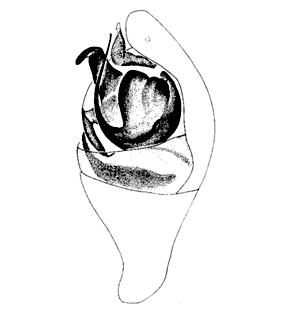  Pedipalp, retrolateral view Pedipalp, retrolateral view
(Levy & Amitai 1982b)
|
  Pedipalp, prolateral view Pedipalp, prolateral view
(Van Keer et al. 2024)
|
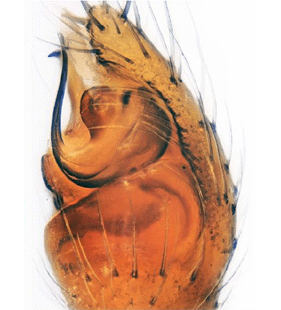  Pedipalp, retrolateral view Pedipalp, retrolateral view
(Van Keer et al. 2024)
|
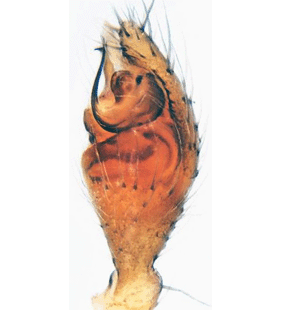  Pedipalp, retrolateral view Pedipalp, retrolateral view
(Van Keer et al. 2024)
|
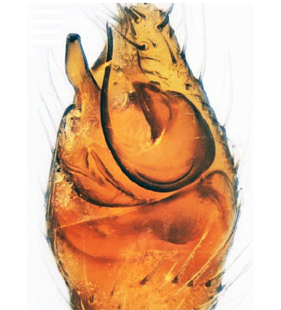  Pedipalp, ventral view Pedipalp, ventral view
(Van Keer et al. 2024)
|
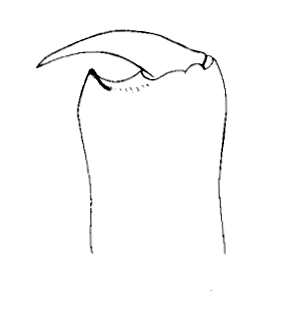  Chelicera Chelicera
(Levy & Amitai 1982b)
|
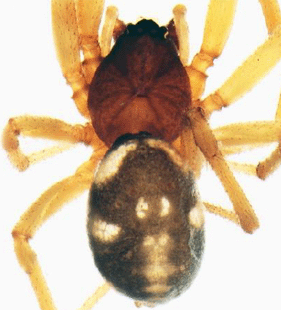  Habitus, dorsal view Habitus, dorsal view
(Van Keer et al. 2024)
|
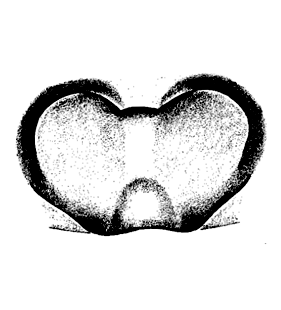  Epigyne Epigyne
(Levy & Amitai 1982b)
|
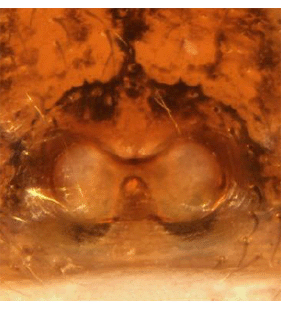  Epigyne Epigyne
(Van Keer et al. 2024)
|
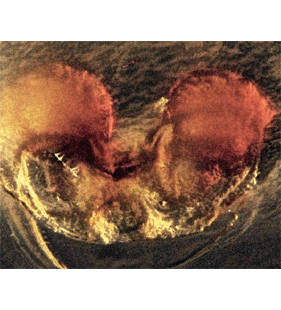  Epigyne Epigyne
(Van Keer et al. 2024)
|
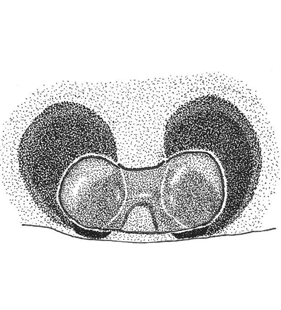  Epigyne Epigyne
(Van Keer et al. 2024)
|
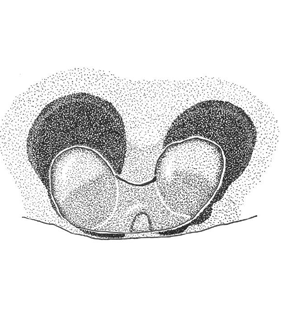  Epigyne Epigyne
(Van Keer et al. 2024)
|
  Vulva, dorsal view Vulva, dorsal view
(Levy & Amitai 1982b)
|
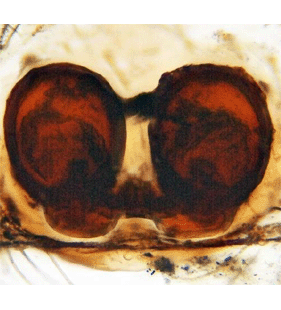  Vulva, dorsal view Vulva, dorsal view
(Van Keer et al. 2024)
|
  Vulva, dorsal view Vulva, dorsal view
(Van Keer et al. 2024)
|
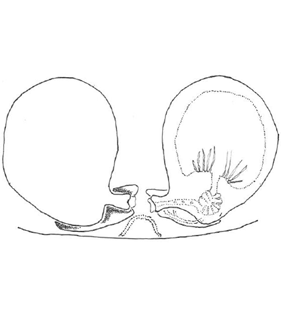  Vulva, dorsal view Vulva, dorsal view
(Van Keer et al. 2024)
|
  Vulva, dorsal view Vulva, dorsal view
(Van Keer et al. 2024)
|
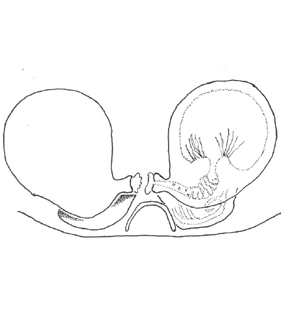  Vulva, dorsal view Vulva, dorsal view
(Van Keer et al. 2024)
|
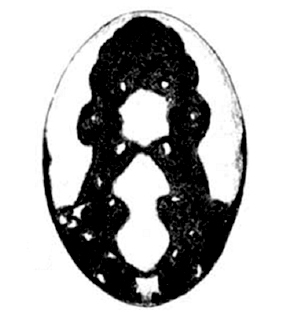  Opisthosoma, dorsal view Opisthosoma, dorsal view
(Levy & Amitai 1982b)
|
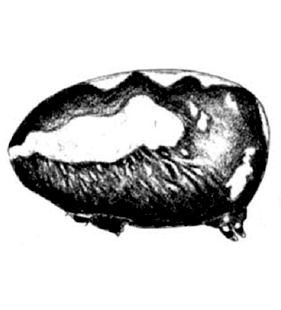  Opisthosoma, lateral view Opisthosoma, lateral view
(Levy & Amitai 1982b)
|
  Opisthosoma, dorsal view Opisthosoma, dorsal view
(Van Keer et al. 2024)
|
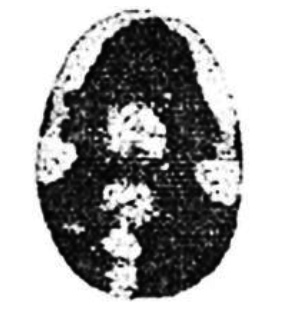  Opisthosoma, dorsal view Opisthosoma, dorsal view
(Van Keer et al. 2024)
|
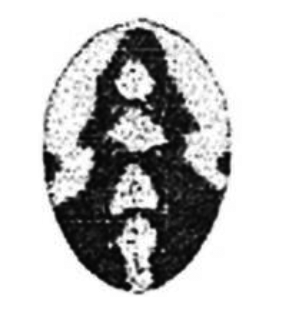  Opisthosoma, dorsal view Opisthosoma, dorsal view
(Van Keer et al. 2024)
|
  Opisthosoma, dorsal view Opisthosoma, dorsal view
(Van Keer et al. 2024)
|
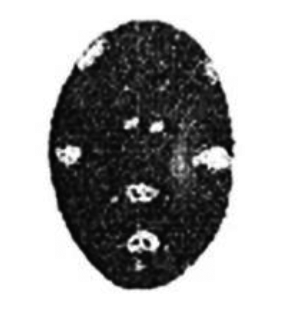  Opisthosoma, dorsal view Opisthosoma, dorsal view
(Van Keer et al. 2024)
|
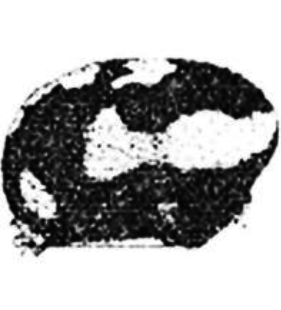  Opisthosoma, lateral view Opisthosoma, lateral view
(Van Keer et al. 2024)
|
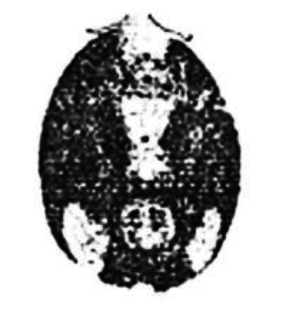  Opisthosoma, ventral view Opisthosoma, ventral view
(Van Keer et al. 2024)
|
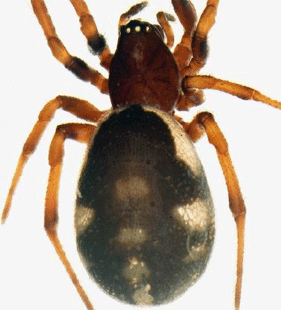  Habitus, dorsal view Habitus, dorsal view
(Van Keer et al. 2024)
|
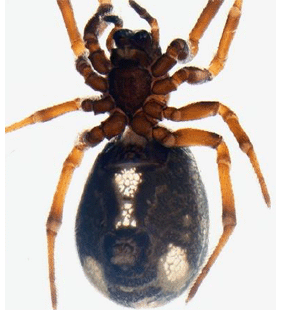  Habitus, ventral view Habitus, ventral view
(Van Keer et al. 2024)
|
|
|
|



| 10. Steatoda maura (Simon, 1909) |
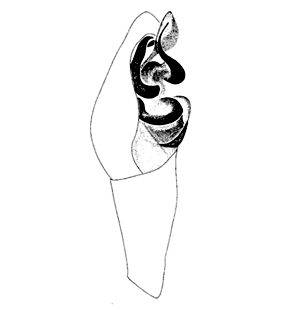  Pedipalp, prolateral view Pedipalp, prolateral view
(Levy & Amitai 1982b)
|
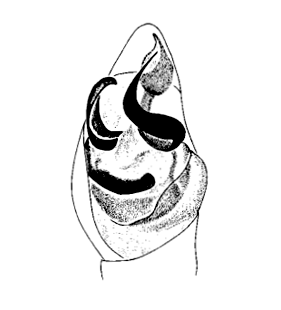  Pedipalp, ventral view Pedipalp, ventral view
(Levy & Amitai 1982b)
|
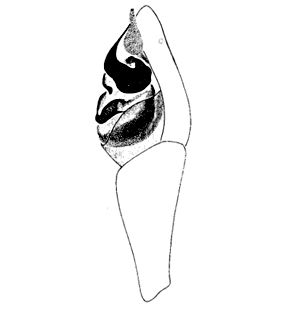  Pedipalp, retrolateral view Pedipalp, retrolateral view
(Levy & Amitai 1982b)
|
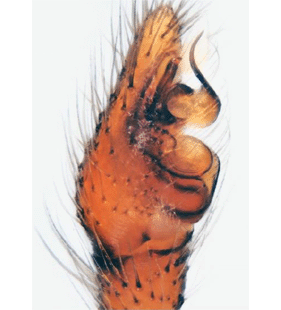  Pedipalp, prolateral view Pedipalp, prolateral view
(Van Keer et al. 2024)
|
  Pedipalp, prolateral view Pedipalp, prolateral view
(Van Keer et al. 2024)
|
  Pedipalp, retrolateral view Pedipalp, retrolateral view
(Van Keer et al. 2024)
|
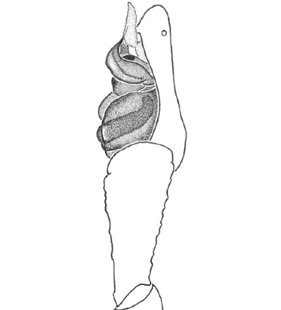  Pedipalp, retrolateral view Pedipalp, retrolateral view
(Van Keer et al. 2024)
|
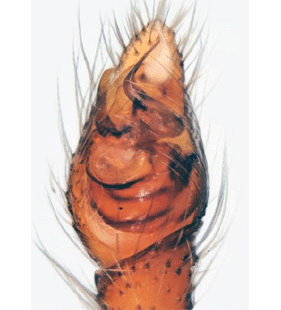  Pedipalp, ventral view Pedipalp, ventral view
(Van Keer et al. 2024)
|
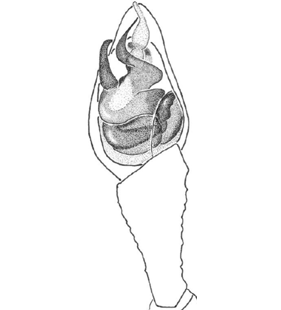  Pedipalp, ventral view Pedipalp, ventral view
(Van Keer et al. 2024)
|
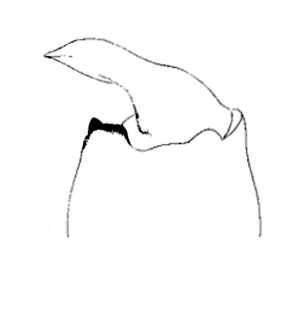  Chelicera Chelicera
(Levy & Amitai 1982b)
|
  Opisthosoma, dorsal view Opisthosoma, dorsal view
(Levy & Amitai 1982b)
|
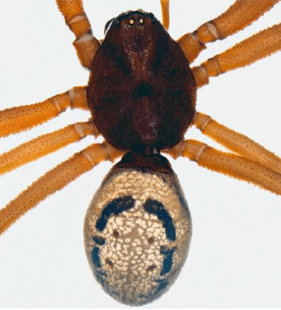  Habitus, dorsal view Habitus, dorsal view
(Van Keer et al. 2024)
|
  Epigyne Epigyne
(Levy & Amitai 1982b)
|
  Epigyne Epigyne
(Van Keer et al. 2024)
|
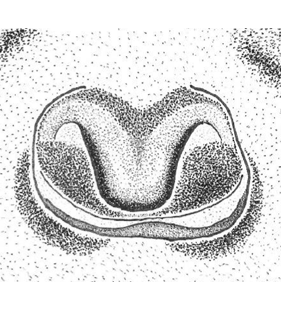  Epigyne Epigyne
(Van Keer et al. 2024)
|
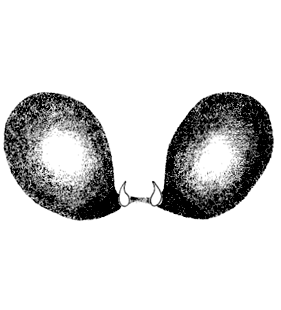  Vulva, dorsal view Vulva, dorsal view
(Levy & Amitai 1982b)
|
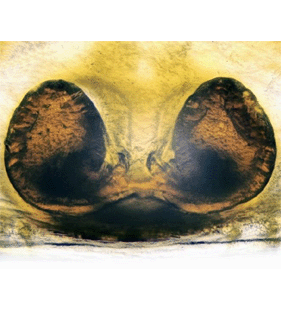  Vulva, dorsal view Vulva, dorsal view
(Van Keer et al. 2024)
|
  Vulva, dorsal view Vulva, dorsal view
(Van Keer et al. 2024)
|
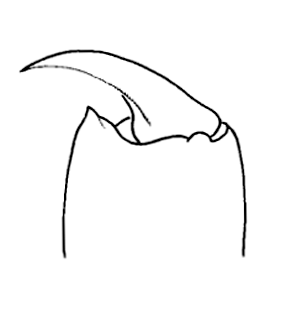  Chelicera Chelicera
(Levy & Amitai 1982b)
|
  Opisthosoma, ventral view Opisthosoma, ventral view
(Levy & Amitai 1982b)
|
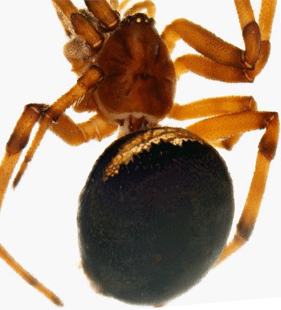  Habitus, dorsal view Habitus, dorsal view
(Van Keer et al. 2024)
|
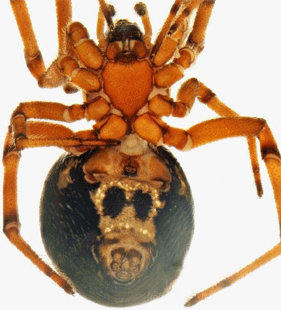  Habitus, ventral view Habitus, ventral view
(Van Keer et al. 2024)
|
|
|
|



| 11. Steatoda trianguloides Levy, 1991 |
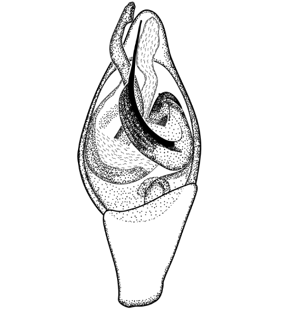  Pedipalp, ventral view Pedipalp, ventral view
(Lissner 2016c)
|
  Pedipalp, mesal view Pedipalp, mesal view
(Levy 1991)
|
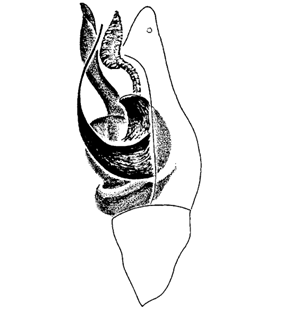  Pedipalp, retrolateral view Pedipalp, retrolateral view
(Levy 1991)
|
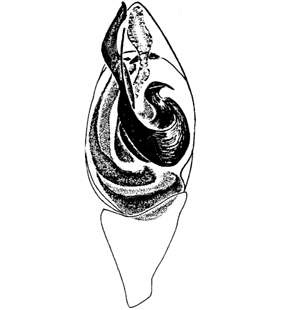  Pedipalp, ventral view Pedipalp, ventral view
(Levy 1991)
|
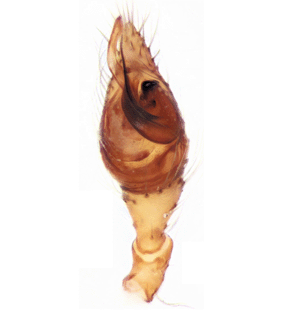  Pedipalp, ventral view Pedipalp, ventral view
(Zamani et al. 2020c)
|
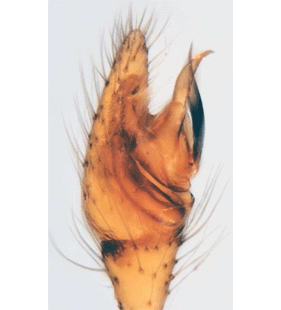  Pedipalp, prolateral view Pedipalp, prolateral view
(Van Keer et al. 2024)
|
  Pedipalp, prolateral view Pedipalp, prolateral view
(Van Keer et al. 2024)
|
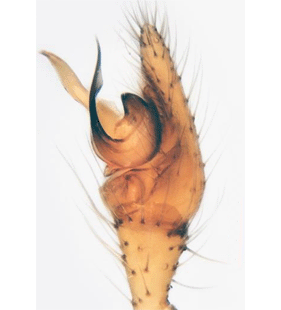  Pedipalp, retrolateral view Pedipalp, retrolateral view
(Van Keer et al. 2024)
|
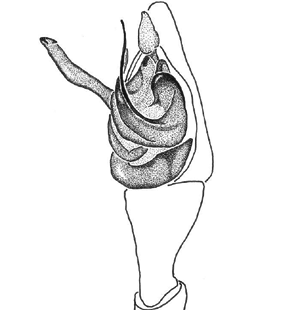  Pedipalp, retrolateral view Pedipalp, retrolateral view
(Van Keer et al. 2024)
|
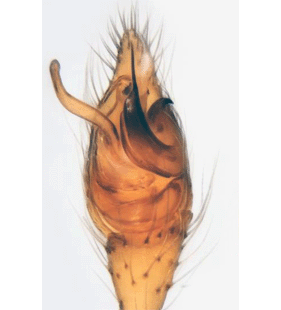  Pedipalp, ventral view Pedipalp, ventral view
(Van Keer et al. 2024)
|
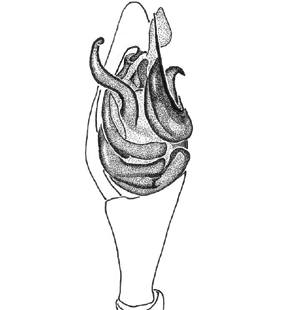  Pedipalp, ventral view Pedipalp, ventral view
(Van Keer et al. 2024)
|
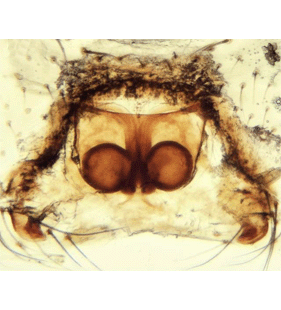  Vulva, dorsal view Vulva, dorsal view
(Van Keer et al. 2024)
|
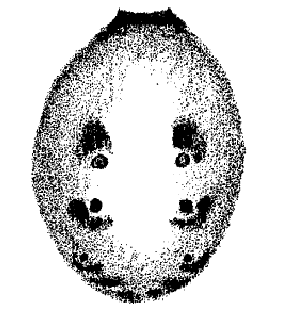  Opisthosoma, dorsal view Opisthosoma, dorsal view
(Levy 1991)
|
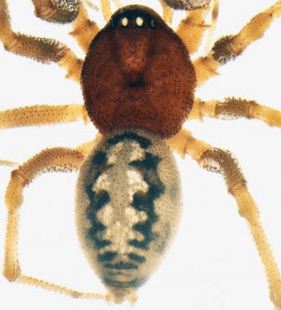  Habitus, dorsal view Habitus, dorsal view
(Van Keer et al. 2024)
|
  Epigyne Epigyne
(Bosmans et al. 2019c)
|
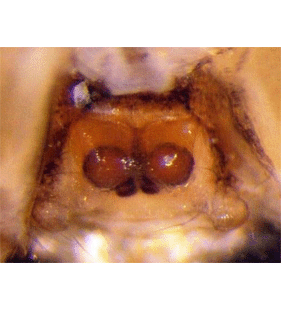  Epigyne Epigyne
(Türkeş & Ballı 2022)
|
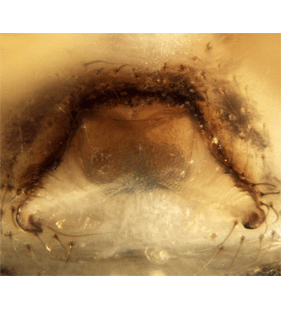  Epigyne Epigyne
(Van Keer et al. 2024)
|
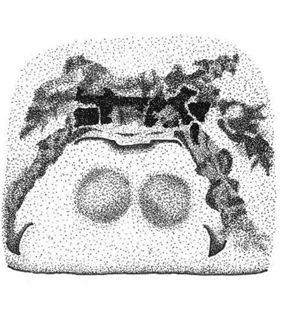  Epigyne Epigyne
(Van Keer et al. 2024)
|
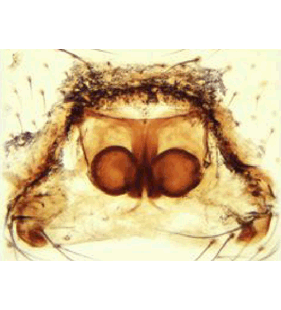  Vulva, dorsal view Vulva, dorsal view
(Bosmans et al. 2019c)
|
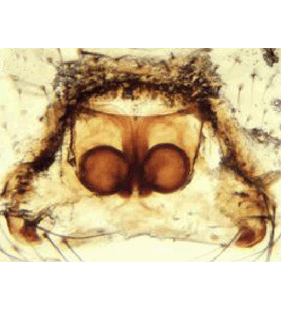  Vulva, ventral view Vulva, ventral view
(Bosmans et al. 2019c)
|
  Vulva, dorsal view Vulva, dorsal view
(Van Keer et al. 2024)
|
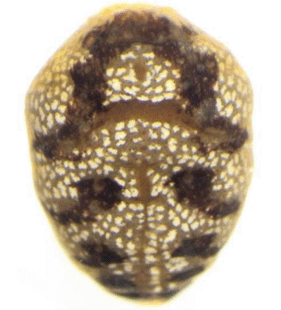  Opisthosoma, dorsal view Opisthosoma, dorsal view
(Türkeş & Ballı 2022)
|
  Habitus, dorsal view Habitus, dorsal view
(Türkeş & Ballı 2022)
|
  Habitus, dorsal view Habitus, dorsal view
(Van Keer et al. 2024)
|
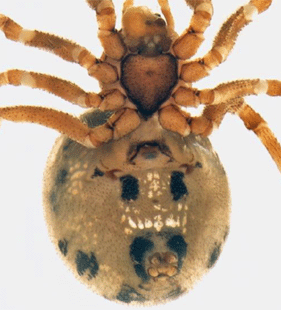  Habitus, ventral view Habitus, ventral view
(Van Keer et al. 2024)
|
|
|
|



| 12. Steatoda verae Van Keer, 2024 |
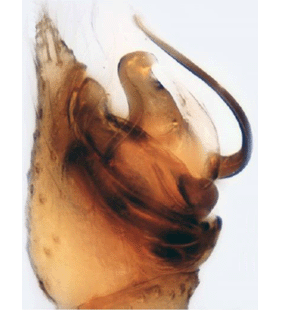  Pedipalp, prolateral view Pedipalp, prolateral view
(Van Keer et al. 2024)
|
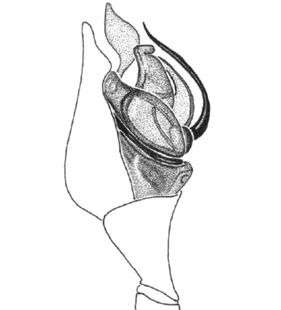  Pedipalp, prolateral view Pedipalp, prolateral view
(Van Keer et al. 2024)
|
  Pedipalp, prolateral view Pedipalp, prolateral view
(Van Keer et al. 2024)
|
  Pedipalp, retrolateral view Pedipalp, retrolateral view
(Van Keer et al. 2024)
|
  Pedipalp, retrolateral view Pedipalp, retrolateral view
(Van Keer et al. 2024)
|
  Pedipalp, retrolateral view Pedipalp, retrolateral view
(Van Keer et al. 2024)
|
  Pedipalp, retrolateral view Pedipalp, retrolateral view
(Van Keer et al. 2024)
|
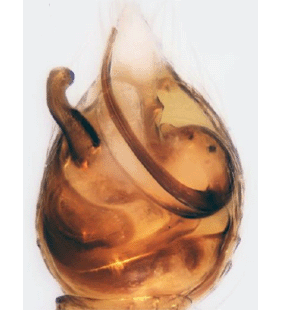  Pedipalp, ventral view Pedipalp, ventral view
(Van Keer et al. 2024)
|
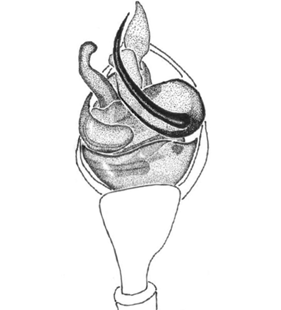  Pedipalp, ventral view Pedipalp, ventral view
(Van Keer et al. 2024)
|
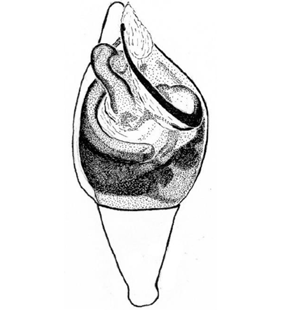  Pedipalp, ventral view Pedipalp, ventral view
(Van Keer et al. 2024)
|
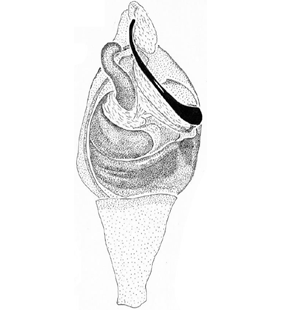  Pedipalp, ventral view Pedipalp, ventral view
(Van Keer et al. 2024)
|
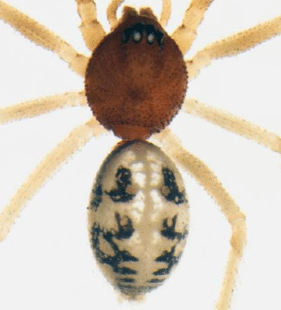  Habitus, dorsal view Habitus, dorsal view
(Van Keer et al. 2024)
|
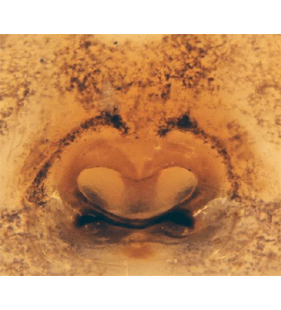  Epigyne Epigyne
(Van Keer et al. 2024)
|
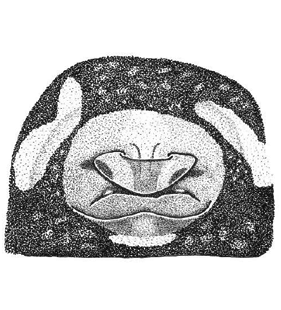  Epigyne Epigyne
(Van Keer et al. 2024)
|
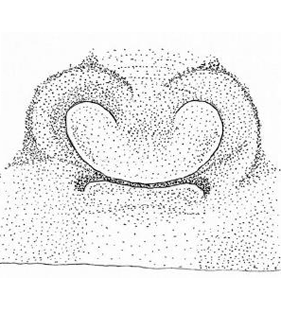  Epigyne Epigyne
(Van Keer et al. 2024)
|
  Epigyne Epigyne
(Van Keer et al. 2024)
|
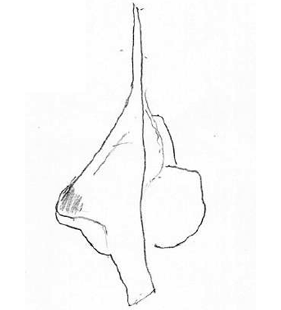  Epigyne, lateral view Epigyne, lateral view
(Van Keer et al. 2024)
|
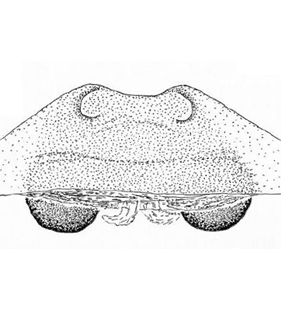  Epigyne, posterior view Epigyne, posterior view
(Van Keer et al. 2024)
|
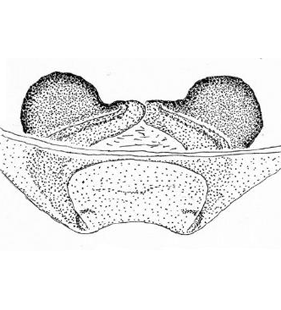  Vulva, anterior view Vulva, anterior view
(Van Keer et al. 2024)
|
  Vulva, dorsal view Vulva, dorsal view
(Van Keer et al. 2024)
|
  Vulva, dorsal view Vulva, dorsal view
(Van Keer et al. 2024)
|
  Vulva, dorsal view Vulva, dorsal view
(Van Keer et al. 2024)
|
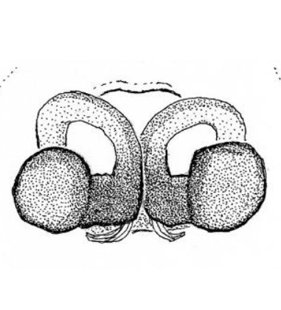  Vulva, dorsal view Vulva, dorsal view
(Van Keer et al. 2024)
|
  Opisthosoma, dorsal view Opisthosoma, dorsal view
(Van Keer et al. 2024)
|
  Opisthosoma, ventral view Opisthosoma, ventral view
(Van Keer et al. 2024)
|
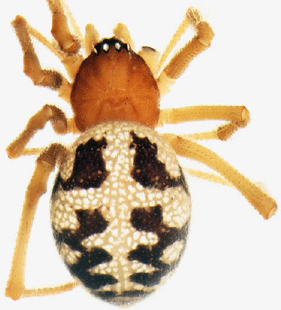  Habitus, dorsal view Habitus, dorsal view
(Van Keer et al. 2024)
|
  Habitus, ventral view Habitus, ventral view
(Van Keer et al. 2024)
|
| |
|
|
|
